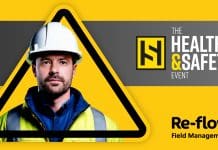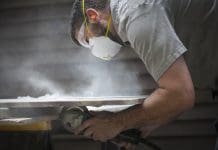John Banks, Director at The Association for Project Safety explains the role of the Principal Designer and how to comply with the CDM2015 Regulations…
So, what is the role of the Principal Designer all about? What it should be about is working with Clients and Designers during the Pre-Construction Phase, to produce designs that can be built healthily and safely by contractors who are provided with sufficient information on reduced residual risks to ensure that construction workers can go home safe and as healthy as they arrived for work at the beginning of their shift.
A Principal Designer (and Principal Contractor) is required to be appointed (in writing) by the Client for every project where there are (or is likely to be) more than one contractor on site at any one time. So a Principal Designer appointment is required for the vast majority of construction projects. The Principal Designer role generally occurs during the Pre-Construction Phase, which is any period where design is being undertaken and on most projects will continue well into the Construction Phase. In practice, most projects will have design continuing into the Construction Phase. For many projects, the Pre-Construction Phase can last until the end of the Construction Phase.
Health and Safety
In the text that follows, the words ‘Health and Safety’ crop up constantly. It is a large part of the responsibility of being a Principal Designer and Designer during the Pre-Construction Phase. Over the years, since the initial advent of CDM in 1995, safety on construction sites has been vastly improved, particularly so on the larger projects. The same cannot be said for Health. Slightly less than one person per week dies on a construction site due to safety reasons (we call them accidents but the term is ill advised). Over 100 construction workers per week die from ill health caused by their work in construction. Designers (working with Principal Designers) really need to concentrate on the effect their design has on the health of construction workers whilst not forgetting the safety side.
Who can be a Principal Designer?
The Principal Designer must be a Designer, appointed in writing by the Client as Principal Designer (an e-mail will do) with control over the Health and Safety elements of the Pre-Construction Phase. One of the Design Team, perhaps the Lead Designer may be best placed to undertake the role, but the Principal Designer does not have to be a Designer on the project. Note the sensible flexibility built into the Regulations to cater for the many faceted and amorphous shaped construction industry where virtually every project is unique. In common with Designers and Contractors, a Principal Designer must not accept an appointment to a project unless they (and/or) their organisation have sufficient skills, knowledge and experience and organisational capability to undertake the role.
Delivering the role of the Principal Designer
The duties of the Principal Designer need to be proportionally undertaken for every Principal Designer appointment for every construction project. Note the use of the words “……proportionally undertaken for every project…….”. By this, I mean the Principal Designer has to undertake all of their duties but depending on the size and complexity of the project, complying with the individual duty may take minutes of resource or days.
Necessary documentation
The best way to discharge the Principal Designer role is via a set of necessary and appropriate documentation. These are:
• Client Brief;
• Resource schedule and associated fee (charge a reasonable fee for the role of Principal Designer);
• Pre Construction Information;
• Design Risk Schedules;
• Health and Safety File.
One of the most important aspects of the role of Principal Designer is to manage the process of identifying residual significant Health and Safety hazards with all Designers by using Design Risk Schedules.
The Principal Designer should ensure that Designers contribute to the agreed project Design Risk Management method (using a consistent pro-forma). Designers must talk, communicate by other means and keep all appropriate parties in the loop. They must also provide information about their design for construction and the Health and Safety File.
Recommendations
If you work in construction, you need to read L153 (Managing Health and Safety in Construction) published by the Health and Safety Executive (which contains the Regulations and Guidance) [free download on the Health and Safety Executive website] and the Construction Industry Training Board (CITB) Guides.
John Banks was part of the Handbook editorial team, which comprised 2 Engineers and 2 Architects. ■
. . . . . . . . . . . . . . . . . . . . . . . . . . . . . . . . . . . . . . . . . . . . . . .
John Banks
Director
The Association for Project Safety
Tel: 0131 442 6600






![[VIDEO]What to expect when you’re inspecting: Using DorTrak for fire door inspections](https://www.pbctoday.co.uk/news/wp-content/uploads/2025/02/maxresdefault-218x150.jpg)






